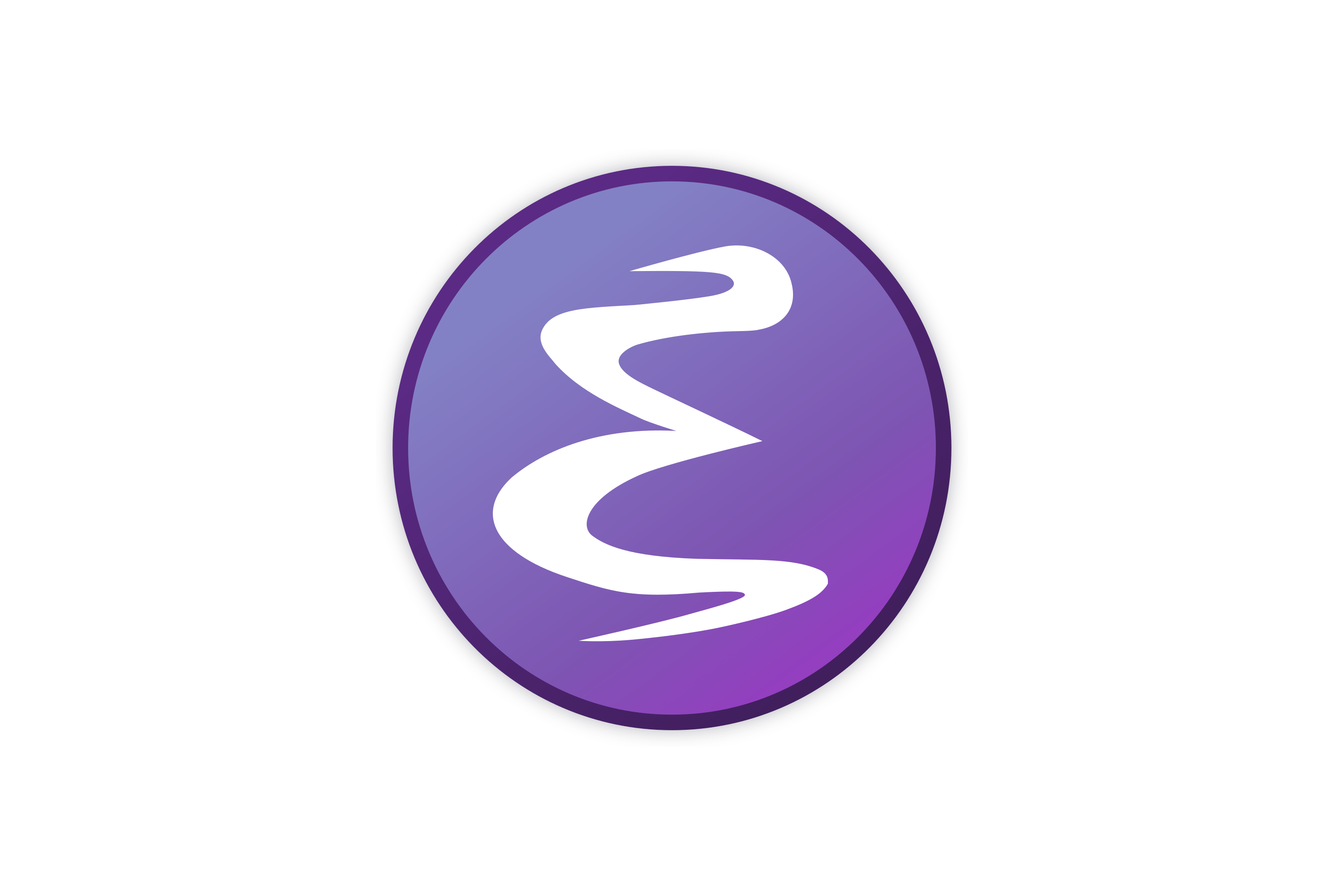Ever had a question about Linux but felt too afraid to ask? Well now’s your chance, ask any question about Linux, no matter how noob or repeated it is, and I and others will help answer them.
Previous noob question thread: https://lemmy.ml/post/14261893
No question here, just wanted to highlight that I use arch btw
I use gentoo btw
Yes, good
But what init system?
;)
Gentoo is great
OpenRC btw 😁
Chef’s kiss
I use Slackware btw
* spontaneously combusting * NOOOO
You should try NixOS, it’s pretty cool.
Don’t listen to this guy, use GNU Guix.
Real talk, I want to try Guix but I have not successfully installed it on any hardware, including VMs. This includes with nonguix for proprietary drivers and stuff. I can never get past install, it always just craps out on some substitution thing. Am I just stupid?
Real Linux users only use Hannah Montana linux. 😎
That’s old and unmaintained.
You should switch to RebeccaBlackOSMaybe. I’m busy right now.
I might do it later. Maybe I’ll do it on
🎵 FRIDAY FRIDAY GOTTA GET DOWN ON FRIDAY 🎵
i unfortunately using kinoite for my desktop and Debian for my servers. I am not totally in love with kinoite but I don’t dislike it enough to change back to regular fedora.
If you’re not using GNU/Hurd are you even trying?
What is something Linux related that you’ve learned recently?
As a meta question, could this work as an additional (or alternate) recurring discussion question? It felt similar in intent, to encourage people to keep learning / asking questions and chances are that if someone learned something then others will benefit from the information (or correct them)
After 26 years of using Linux, I did my first baremetal “immutable” distro install last week.
My youngest son is starting school and instead of the Chromebooks that they recommend, I took a chance and installed Fedora Silverblue on a $200 Lenovo “student-rugged” class laptop. Everything works and he hasn’t had any issues so far. He gets access to the same student platform as the other students through Chrome, but then I can install Minetest and Tux Paint and GCompris as well.
The older kids run Debian stable for years now, but if this works out, I might transition them over next semester.
I learned how a kernel actually loads a program and switches between them by using timer interrupts and interrupt vectors that point to specific locations in memory to resume execution from. Not specifically Linux related, but I’m trying to learn more computer science, and it just clicked for me two weeks ago. I’ve been programming microcontrollers for ten years, but those are monolithic programs, and while I knew what interrupts were and have used them, I never understood how an OS actually runs multiple things while staying in control. Now I do. About time I understood a core concept of these machines that have been here all 42 years of my life.
It’s one of those “aha!” moments like when I realized classes and structs are just data types like any other in C++ when I was starting off programming and can be used like them. OOP became fun after that.
I remember when the mapping of virtual memory segments clicked for me. I think i said out loud, “that’s so clever!”. Now it just seems so fundamental to managing memory for user space applications, but I hadn’t thought about how it was done before.
The other day I learned that you can just grep an unmounted filesystem device. It will read the entire disk sequentially like it’s one huuuuge file. And it will reveal everything on that disk… whether a file inode points to it or not.
Used it to recover data from a file I accidentally clobbered with an errant mv command. It’s not reliable, but when you delete a file, it’s usually not truly gone yet… With a little luck, as long as you know a unique snippet that was in it, you can find it again before the space gets something else written there. Don’t even need special recovery tools to do it, just use dd in a for loop to read the disc in chunks that fit in RAM, and grep -a for your data.
I’m always too afraid to ask… Is this year finally the year of Desktop Linux? Is next year the year of Mobile Linux?
trolololo.jpg
I kid, this year has been the year of Desktop Linux for well over two decades for me. Obviously! And I think this megathread is great idea :)
Year of mobile linux
[ astronauts meme ]
Always has been
Alright, absolute noob here, I’m not particularly interested in computer science or an OS I have to obsessively research. First, how is gaming on Linux nowadays? I play a lot of games, most of which are not triple-A, so I wonder how accessible this is. Second, what distributions are accessible and still customizable? I have all kinds of peripherals I’d like to be able to use, speaker systems, midi controllers, etc.
Fellow Linux noob, just started using it earlier this year so if someone with more experience wants to weigh in, please do.
That said, gaming on Linux is pretty good. Steam’s proton makes most games playable out of the box, although it’s still a good idea to check Proton DB to see if any particular game you want to play is playable.
As for your other question, I’m not totally sure what you mean by accessible and customizable, but I don’t think any of your peripherals are going to be distro locked. The Arch Wiki is a pretty good resource for, well, everything, but most relevant to you for your peripherals (it also usually gives good information for any distro, not just arch)
About gaming, from my personal experience, it’s overall pretty straight forward. When issues happen, you just got to have patience to read through logs and search up on Google or similar any suspicious parts of the log. Worst part is usually DRM/anticheat, but from what I can gather, usually pretty isolated cases are problematic due to compatibility, usually requiring the devs to go out of their ways to make the DRM incompatible.
As for the distros question, perhaps Linux Mint? It trades off bleeding edge updates for the sake of stability. Just avoid the Debian-based variant of Mint for now as it’s still in beta.
I may be misunderstanding here and feel free to correct me if I’m wrong but I was of the understanding that Mint wasn’t a good gaming platform because of the fact it’s not bleeding edge
Q1: Pretty good! Use ProtonDB to check what games work, and if you need to apply any fixes.
Q2: Linux Mint is the most popular choice for beginners, and it’s extremely easy to use. Other people choose Pop!_OS because it’s apparently better for gaming (I haven’t tried it). However, I think the best distro for gaming, while still being extremely stable, is Nobara (a distro based on Fedora Linux).
Also, practically all Linux distros are customizable, don’t worry about which one’s the best.
P.S: You can browse through the most popular distros here: DistroWatch
(Background: I’ve been obsessively using Linux for four years.)
I can also recommend Zorin OS for a semi-familiar look with a very polished design. Switched to it as my first distro after ditching Windows for good.
I have an old (2017) Windows 10 box that is ineligible for Windows 11. Originally purchased to run my Oculus Rift, it now just streams YouTube and Twitch and plays some old Steam games and occasionally school related stuff (Lexia, Scratch, stuff like that).
I started thinking that, rather than worrying about an unsupported Windows OS on my network, I might upgrade to Mint or Ubuntu.
So, my question(s) is/are, how much of a hassle will such an upgrade be? Will I need to wipe the drive, or can I keep my files without having to back them up first? Can I run Windows games on Steam with Wine? Are there good 3D card drivers nowadays?
I’m reasonably versed in using Linux as a user, less so as an admin, in case that affects the way you answer.
-
Depends on how much crap you’re willing to put up with. It’ll all be worth it in the end! (Pro tip: disable secure boot in BIOS)
-
I wrote a whole guide on the two options, but then accidentally deleted my comment. You can either install Linux on another drive, or shrink your NTFS partition and install Linux alongside it. You can always access NTFS from Linux, but not the other way around (by default). If you don’t understand what I’m talking about, you should really look it all up. I would personally just backup and wipe, you can always reinstall Windows if you want to.
-
Have you heard of Valve’s Steam Deck? It’s a handheld gaming device that can play nearly every PC game, and it runs Linux! Valve made gaming on Linux an absolute breeze thanks to Proton. There are some popular games that don’t work, either because Tim Sweeney hates Linux (yes, really) or because the anti-cheat won’t accept Linux, but I only know about Destiny 2 and Rust that have that problem. Easy Anticheat works just fine, I play Apex Legends and Deep Rock Galactic with no issues!
-
If you have AMD, you don’t even have to think about it. Their drivers are part of the Linux kernel. Nvidia is not impossible to use, but you might have some issues. I experience random desktop environment crashes that I can only attribute to their drivers, but it only happens on startup sometimes, which is the least annoying it could be. If you choose a distro that doesn’t mind automatically installing non-free software, you probably won’t need to think about it either. The open source driver, Nouveau, works fine but performs awfully in games (or at least it did a year ago).
If you just want some clear instructions: backup your files, wipe your disk and install Linux Mint Cinnamon Edition. It’s easy peasy to use and getting the proprietary graphics drivers is only a few clicks away. Just configure your Steam games to run through Proton and you might not even tell the difference.
Thanks for the detailed explanation!
-
There would be no hassle in wiping the drive, you can do it as part of the super easy installation process for any Linux distro. Ideally you would back up any important files and drop them into your fancy new file system once the install is finished. And you can pretty much launch almost any game directly out of steam and it will run. There are a few exceptions for some of those games with anti cheats that rootkit your system, but the majority just work out of the box. Drivers included, but Nvidia might be ever so slightly annoying
Games work fine, if you install linux as a dual boot, you can move the files over (windows files appear as if the windows install was a usb key). Also drivers are fine
Everything people are saying here checks out, but you might struggle with VR. I haven’t tried VR on Linux yet, but I’ve heard some things about support being pretty janky. Maybe others with experience can weigh in.
I’d be interested to see what people have to say regarding VR setup, but the Oculus gets little use anymore. I have a few games that were never ported to the newer, self-contained systems (I have a Quest 3), and we’ve downloaded a bunch of custom Beat Saber levels that I might feel bad about, but the sensors are a big enough pain to set up that I don’t know that I’d feel that bad.
Yeah, I’ve considered VR for a long while, but between the already existing headaches, and the Linux related headaches I’ve heard of, I’ll just wait until I’m retired for VR space games, VR racing, and VR porn. Hopefully it’ll get better before I’m dead.
To install at minimum you’ll need to likely shrink existing partitions and create new ones for linux if you don’t want to wipe the drive, that would be a dual-boot setup with Windows still installed along side. Or you can just wipe the drive entirely and have only Linux.
Regarding the files you should already have backups of anything important, if you don’t, set it up ASAP.
Messing with partitions can easily cause data loss if something goes wrong.
You also never know when hardware failure, malware, power surges, lightning strikes, or whatever other disaster will happen and cause data loss. 1 copy of files might as well be 0 copies.
I’m pretty sure anything of value is already backed up to my NAS. I’m just paranoid that my kids might freak out that I destroyed their state fair winning Scratch project or something.
I just do full system images for that reason, easier than trying to pick and choose what should be backed up. Used to use Veeam, currently using Synology Active Backup.
For online backups I don’t due to size, but for local backups it’s just way easier.
Truth. Full system would be easier.
That was half the reason I upgraded. I don’t know if my old box would’ve been compatible (probably was), but I wanted it off Microsoft territory so bad and heating about Copilot sent shivers all over my spine.
I’ve never heard of installing any new OS without having to back stuff up. That’s just wishful lazy thinking lol.
You probably won’t have to do anything manually about Wine. Steam has Proton built in and it works great. As others always mention, check ProtonDB.com for user reports on how a specific game will work out.
I haven’t run into any problems in my library, but I honestly haven’t installed a ton of games.
I’ve used Heroic Games Launcher and Lutris for some other launchers (like Battle.net or Epic Games), and those have been a little hit or miss, but I think the main problem is something I’m missing. Not a huge priority but I’m still working on it occasionally.
I haven’t heard anyone call or 3D card since the 90s. They’re video cards or GPUs these days man. AMD has open source drivers that work just fine with Linux and should work just the same as the Windows version I believe.
Nvidia has open source ones, but they seem to be pretty terrible compared to the closed source ones. I had one issue with them last week but I think that was more related to KDE than it was the drivers’ fault.
I don’t really have any fancy hardware to describe how easy that was to get to work. Just a mouse, kb, headset(with mic) all of which worked fine without doing anything. I have a physical dongle for the controller, so I had to get a driver for that so I didn’t have to use a Bluetooth connection (pretty shitty comparatively speaking) or gasp plug it in. Had a few issues with it for a while, there was an updated version under a new name and such but it all works now. Just turn the controller on and it’s working instantly (unless I forget to charge it lol).
I’m on Linux mint 22 and my audio outputs don’t change automatically. When I plug in USB headphones, audio won’t output to them unless I manually change it in settings.
Also, why can’t I interact with the panel applets (on the right side) while I’m in game? For example: I’m playing a game, I plug in my headphones, I have to manually change the audio output so I hit the “windows” key to bring up the panel, but I can’t interact with any of the applets on the right side of the panel (I can’t select the audio icon and change settings from there). I have to search audio settings in the panel then alt tab to it. It’s really cumbersome
Fun fact: The “Windows key” (or “Command key” for Mac users) has its own generic name: the Super key!
Not trying to be a smartass here; I genuinely find it fascinating! :D
Some distros call it the Meta key.
I didn’t know that. Thanks!
Which distros, out of curiosity?
Fedora KDE does. I think it’s going to go with the DE rather than the distro, I bet Kubuntu also does.
I think dating back to the Space Cadet keyboard, Unix systems recognize 6 modifier keys: Shift, Control, Alt, Super, Meta and Hyper. It is my understanding that they choose to bind either Super or Meta to the “Windows” key (or the octothorpe whatever that thing is called key on Macs) and in practice it’s used as another modifier key, often with Windows-like functionality such as opening the Menu if tapped tacked on.
That is so weird. Haha.
Can you try
"pactl load-module module-switch-on-connect"?maybe a silly question bit is mint using pulse audio?
It’s not a silly question; I thought it doesn’t matter because PipeWire supports Pulseaudio.
It says “no valid command specified”
Did you enter the command line (especially
load-module) correctly?“Pactl load-module” outputs “you have to specify a module name and arguments.”
I duck go’d that command and it seems like it’s for pulseaudio. The latest mint release uses pipewire for the audio server. Is the command different for that?
“Pactl load-module” outputs “you have to specify a module name and arguments.”
As I said in earlier comment, please run
"pactl load-module module-switch-on-connect"exactly. Note thatPactlandpactlare different commands and the former is invalid.Is the command different for that?
As the name suggests,
pactlis a command for PulseAudio. PipeWire supports application written for PulseAudio, includingpactl. Try"man pipewire-pulse"to get further info.That seems to have worked. Tbf, your original comment displayed as “pactl load-module module-switch-on-connect” Which indicates 2 seperate commands.
I don’t know if this is specifically possible. I’m not quite rookie-level new (been using it about a year now) but I have something I would love to have convenience-wise.
It’s a desktop machine with regular speakers, and I have a wireless headset that connects to its own dongle (not Bluetooth). It’s there a way to switch to the headset automatically when I power it on, and revert to speakers when I turn it off?
I feel like it’s possible hardware-wise, but I’m not tryna learn how to code to make it happen, and I don’t know how to find a software solution. I don’t even know what to call what I’m looking for.
i’d suggest starting by finding out what package in your distro actually decides where audio goes - mostly it is pulseaudio (older) or pipewire (newer).
depending on the details of how your distro and the dongle work, it could either be a simple “pactl set-default-sink <headset-name>”, or a more complicated set of udev rules or pipewire/wireplumber scripts.
note that distros using pipewire still often support a lot of pactl commands, so it may be worth looking at the simple option even when not using pulseaudio.
They can also use pavucontrol, whether they use pulse or pipe, for a GUI to select default audio interface as well as easily switch apps to different outputs if needed
Is the dongle visible by the system only when the headset is powered on? Does the computer have any way of knowing you’ve turned your headset on? What make and model is that headset?
With the recent Microsoft garbage, I’m giving Linux another try. I’ve been running a laptop for a while, no issues. My main rig, however can’t read all of my um…?hard drives
A live USB of Mint 21 reads 2 of 5 drives fine. The rest are recognized from GParted, but can’t access them. It looks like NTFS-3G is installed.
I’ve duck duck go’d (which apparently is just Bing) for a solution, but haven’t succeeded. Long term, I can probably pick up another drive, copy, and reformat everything to something Linux friendly. For now, I just want access.
I’m lazy and burned out. I don’t want to use the terminal- which I did try. I just want to make a few clicks and have access to all of my files.
If it matters, the drives (roughly) show up as: 500 gb, 4 TB NTFS (readable) 3, 12, 16 TB unknown (not readable)
Windows says they’re all NTFS.
Is there an easy way to easily mount my drives?
I think the disks could be Dynamic Disks on which it would not be a good idea to install a linux distro.
Unfortunately Microsoft’s own advice to change it to a basic disk (since it considers dynamic deprecated) WILL RESULT IN DATA LOSS.
Since you only want to access them it seem to be possible with ldmtool. While it is a cli tool there is a corresponding service that at least according to some askubuntu posts and arcwiki should make them behave like normal filesystems.
If you can boot back into windows, turn off quick startup/shutdown, run chkdsk or whatever on the drives, reboot back into windows then boot back into Linux and you’ll be okay.
Quick startup is a kind of weird sleep/hibernate mutant that leaves drives in an unclean state when it turns off, so the Linux drivers for ntfs say “I’m not gonna touch that possibly damaged drive”.
Will it blend?
Depends on the hardware, but generally, yeah.
(It’s a joke)
I couldn’t get the Chuck Norris edition to blend, unfortunately.
I got one!
What constrains access to an rpc port in the file system? Is it just the permissions of the port or is there more to the whole process?
Is plasma big screen really an option? Id like to install it on a desktop to act as a android tv. Launch Stremio, YT and maybe one or two other apps/websites. Easy big tile navigation with remote (flirc).
It’s in dev since 2020. The images hosted on the site are bit for any of my hardware. It says theres a Debian package. Installed that though LMDE but it was horrible. Somone mentioned Kububtu can install it with apt, but its not listed. Think I’ll give up.
Good question! Someone let me know when there’s an answer.
I wanna install Linux on my Desktop as main OS after years of windows, last time I tried desktop was Fedora and Ubuntu back in the late 00s, back then all I remember is playing around with Gnome and KDE and compiz…
Most of what I know about Linux distros today is from memes…
How can I quickly learn about the best distro for my needs, (general use, some development, and some gaming, easy hardware support). With a toddler and demanding job, I don’t have too much time to just experiment with different distros and draw my own conclusions.
Thanks in advance.
Ubuntu and Linux Mint are ideal for people who just want to ignore the OS and get work done.
If you are a Dev you should be clear of such problem, unless you need a very specific tool, but, many people can’t switch because the programs they work with are not supported on Linux. Take a look into that, and in the worst case scenario you can dual boot windows.
Gaming wise proton is a bless and let’s you play most games, check protonDB for compability. Major portion of the games that don’t work are due to crappy anticheat solutions.
Good luck, any other questions feel free to ask.
I agree with Mint. I think Ubuntu has kind of devolved though, and PopOS is the better way to go. Fedora’s good too these days.
My recommendation is to try out a few distros in VirtualBox before switching - this was my process, and it can be very gradual.
My Ubuntu server (which has been working for a few years now) recently asked me in a full-screen prompt while updating something about GRUB. There was a list of partitions with just one element, which is the partition that GRUB os on. I was focused on something else so I just hit enter, but now I am really scared to reboot it. Is there any way to pull this back up or to double-check that everything is ok with the machine?
you can use grub-mkconfig to verify the grub config and rebuild it if necessary. i dont recall the exact syntax for your distro so I would look it up first.
Howdy. I have a “homeserver” that I’d like to actually start using. What’s currently keeping me from it are… Permissions.
I have TrueNas Scale running on top of Proxmox, and I can’t for the life of me not access NFS Shares from other VMs (specifically a Debian VM that I use as Docker Host) that I host in Proxmox. Plox hlp.You can try to see which mounts get exposed with
showmount -e IP
To see if the actual shares are working.
I have a server that has multiple services running under multiple users that each store data. I want to be able to bundle all this data up and send it to another server for backups.
At a high level, how do I manage permissions for this? Currently I run the backup as root, then chown it to a special backups user which can log in through ssh. But this all feels clunky to me.
There are many ways to do this, but the next up from users is using groups!
For each file or data directory, create a group that owns it. This group should have the service’s user as member. Then create a user for running the backups, and add it to all these groups.
The benefit of this is you don’t have to use root, and you have an association of directory to group that you can always change. You can for example grant a user access to a data directory by just adding it to its group.
Might want to take a look at a dedicated backup tool like Borg. It will keep all the proper permissions and file attributes in the backup.
I am somewhat in the same boat, but more gentoo sided. For the main repo they killed mkstage4 because its outdated and insecure. So like you i wanted to backup my data (my gentoo install) to my nas or local storage. Rsync is the magic bullet for this. You can use ssh to securley transfer data to or from the server. And it automate it via a cron job (i suggest fcron) for a automatic timed backup/sync. Now i will add, rysnc can be used as a backup. But as the name implies it syncs data from one pc to the other. So if you break your desktop and it syncs to your server. Your SOLPDQ, thats only if you automate it tho.
And for the services id reccomend making a directory and adding all the services to a group, which owns the directory. Or the more lazy solution, which is probably frowned uponed. But you can rsync your docker container data to a directory where it has permissions to copy/sync.
Id highly recommend Rsync tho and just syncing offsite to another computer


















